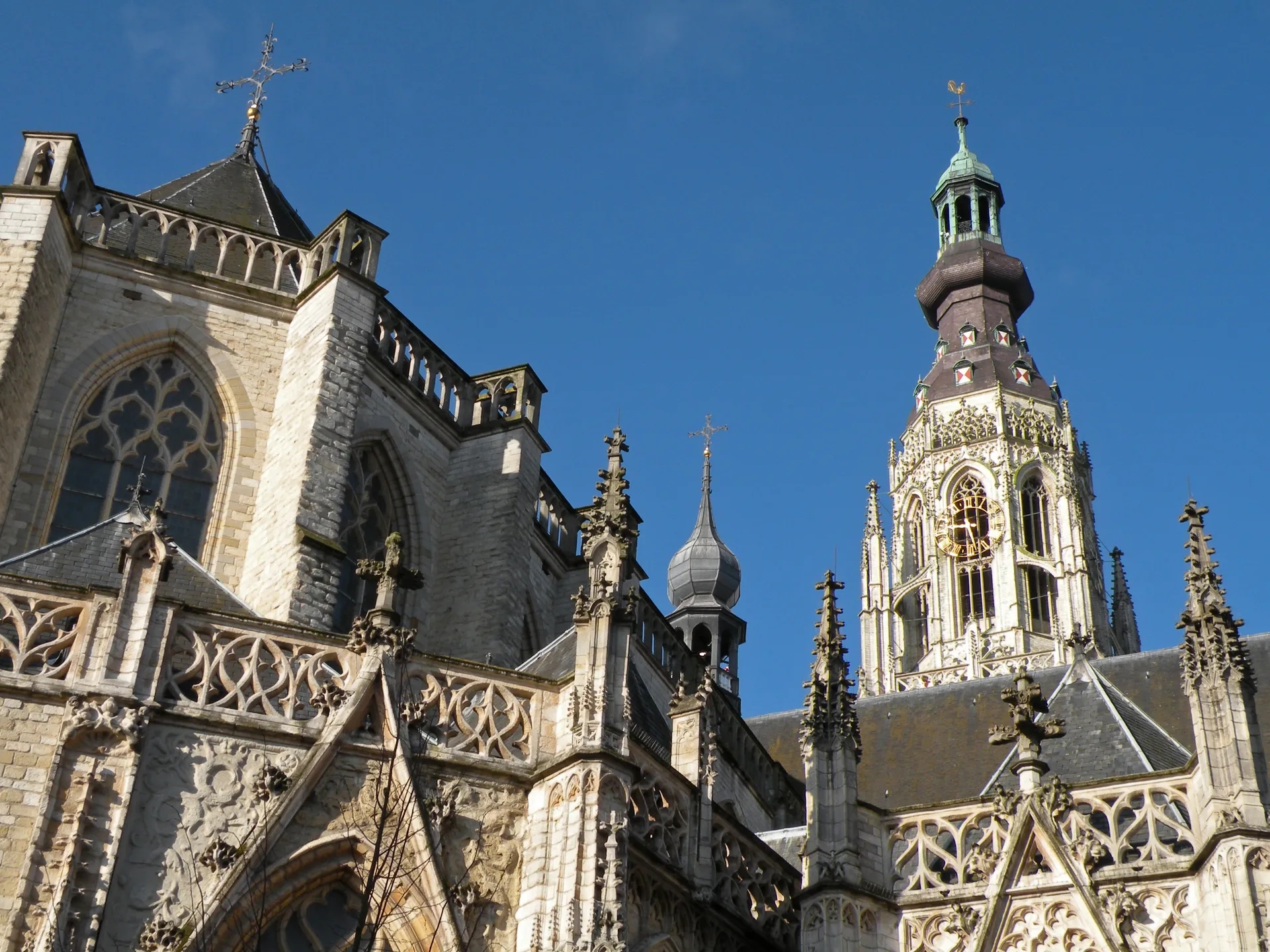The rich history of De Grote Kerk Breda
750 years back in time
The first mention of a stone church at this location can be found in a charter from 1269. Engelbrecht 1 of Nassau (the first Nassau in Breda) commissioned the building of a monumental church in 1410 to honour the birth of his son Jan IV of Nassau. The church was to be equipped with a crypt where members of the Nassau family could be interred, as was customary for a wealthy, prominent family.
In the following century, construction of the (then still) Onze Lieve Vrouwerk (Our Lady's Work) continued. Count Hendrik III of Nassau made significant contributions.
De Grote Kerk as a pilgrimage site
In the early 15th century, a farmer in Niervaert (near Klundert) found a consecrated bread wafer that started to bleed when he touched it with his spade. An envoy from the bishop confirmed that a miracle had occurred, and Niervaert became a place of pilgrimage, especially when healings were attributed to the wafer.
When the area around Niervaert was plagued by floods (including the well-known St. Elisabeth flood), Jan IV of Nassau (the son of Engelbrecht I and Johanna) brought the wafer to Breda in 1524 as a precaution. The flow of pilgrims shifted to the Onze Lieve Vrouwekerk in Breda. During the Iconoclasm in 1566, the monstrance containing the wafer was presumably lost. With that, Breda lost its status as a place of pilgrimage.
Final resting place for the Nassaus
Nine Nassaus and the first Prince of Orange, René van Chalon, found their final resting place in the mausoleum under De Grote Kerk. Among them was Anna van Egmond, the first wife of Willem van Oranje, and their little daughter Maria. Willem himself had reserved his spot here, but when he was shot dead in Delft, Breda was in Spanish hands. He (and after him all Oranje-Nassaus) were interred in the Nieuwe Kerk in Delft.
Two hundred tombstones
Not only Nassaus are buried in the De Grote Kerk. This is evidenced by the approximately 200 tombstones dating from the 15th to the 19th century. The most recent burial dates back to 1828.
Prince's Chapel
One of the highlights of De Grote Kerk is the Prinsenkapel, built on the orders of Hendrik III van Nassau. By doing this, he honoured his childless uncle Engelbrecht II, who had designated him as his heir. Hendrik held an important position at the court of Emperor Charles V. Impressed by the Renaissance art in Southern Europe, he had Renaissance elements added to the Prinsenkapel, which were very innovative for that time in the Northern Netherlands.
Also noteworthy is the ceiling of the chapel, painted with gold leaf in the Nassau colours of blue and gold.
On the wall hangs the triptych "The Invention of the True Cross" by Jan van Scorel. It was made around 1540, likely commissioned by René de Chalon, son of Hendrik III and Claudia de Chalon.
Decay and restoration
The church suffered greatly during the iconoclasm in 1566, but remained Catholic until 1576. In 1637, the church was definitively changed to Protestant and its name was changed to Grote Kerk. All reminders of the Catholic worship disappeared from the church. Fortunately, the tombs, the copper font, and the stained glass windows were preserved.
A period of decline began. The economic downturn also affected the church. In 1694, the original topping of the tower burned down. It was only restored in 1702. Many damages to the Renaissance art occurred at the end of the 17th century when the church was used as lodging for the French soldiers who occupied Breda. Since 1843, and still today, there have been many restoration works on the church.
Polleke, the mummy cat
Since spring 2025, visitors to the Grote Kerk can meet Polleke, the mummy cat. Six hundred years ago, this cat was walled up on the north side of the building as a sacrificial offering to keep evil spirits out.
After being taken home by the restoration architect at the beginning of the 20th century, it disappeared from view.
Until a few years ago, when the cat, well preserved, was found in an attic. Research showed that it was indeed the Breda mummy cat.
After a competition among primary school pupils, he was named Polleke, after the Van Polanen family who were instrumental in the construction of the church.
Translated with DeepL.com (free version)
The carillon
We mainly know a carillon as a musical instrument, but in the past, the chime also served an important practical function. The short melodies that can be heard every quarter hour were meant as warnings for an hourly, half-hour, or quarterly chime and have been ringing over Breda since 1511. Residents did not have their own clocks or watches. Nowadays, these melodies are played automatically. The changing of the tunes is done manually every six months.
Paul Maassen is the fourth in the Maassen generation to play the carillon as a city carillonneur. Every Friday and Saturday, he climbs the 320 steps of the tower, just like his father, grandfather, and great-grandfather did in the past hundred years. Between 12:00 and 13:00, he scatters his sounds over the city.
Between 1 October 2023 and 1 October 2024, David van der Vlies will replace Paul Maassen as city carillonneur.
